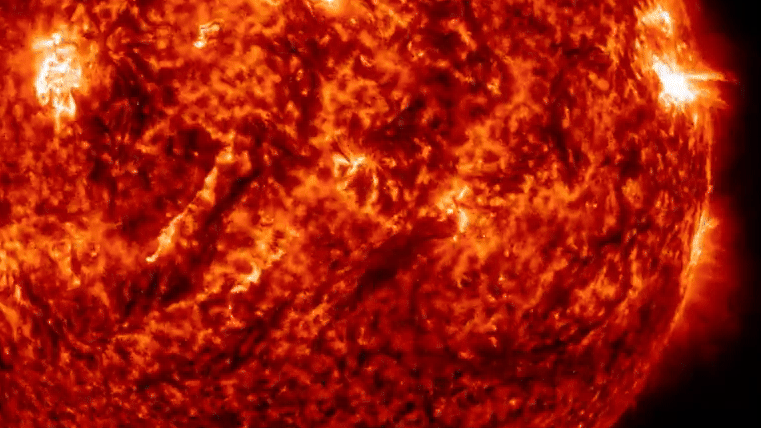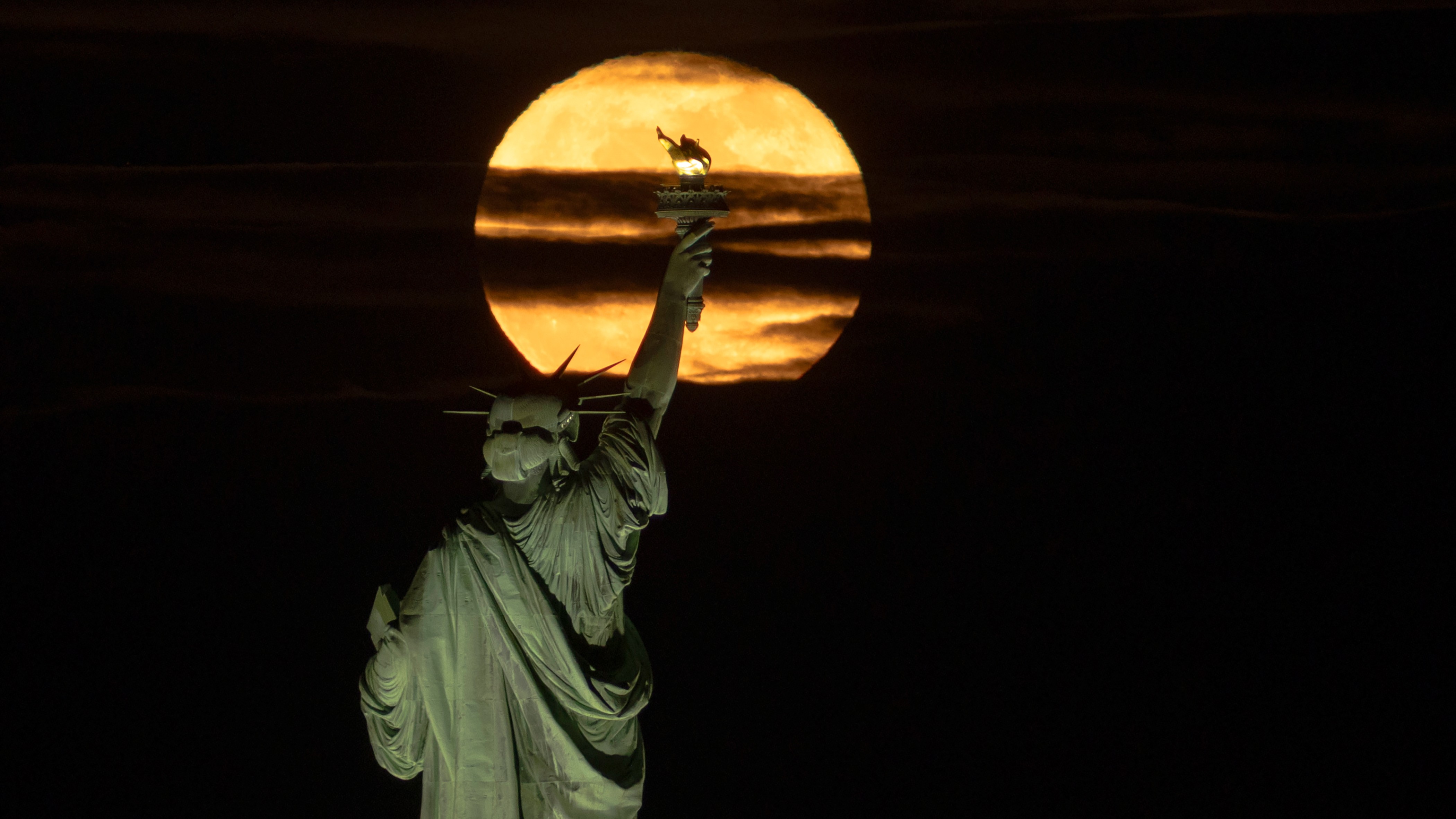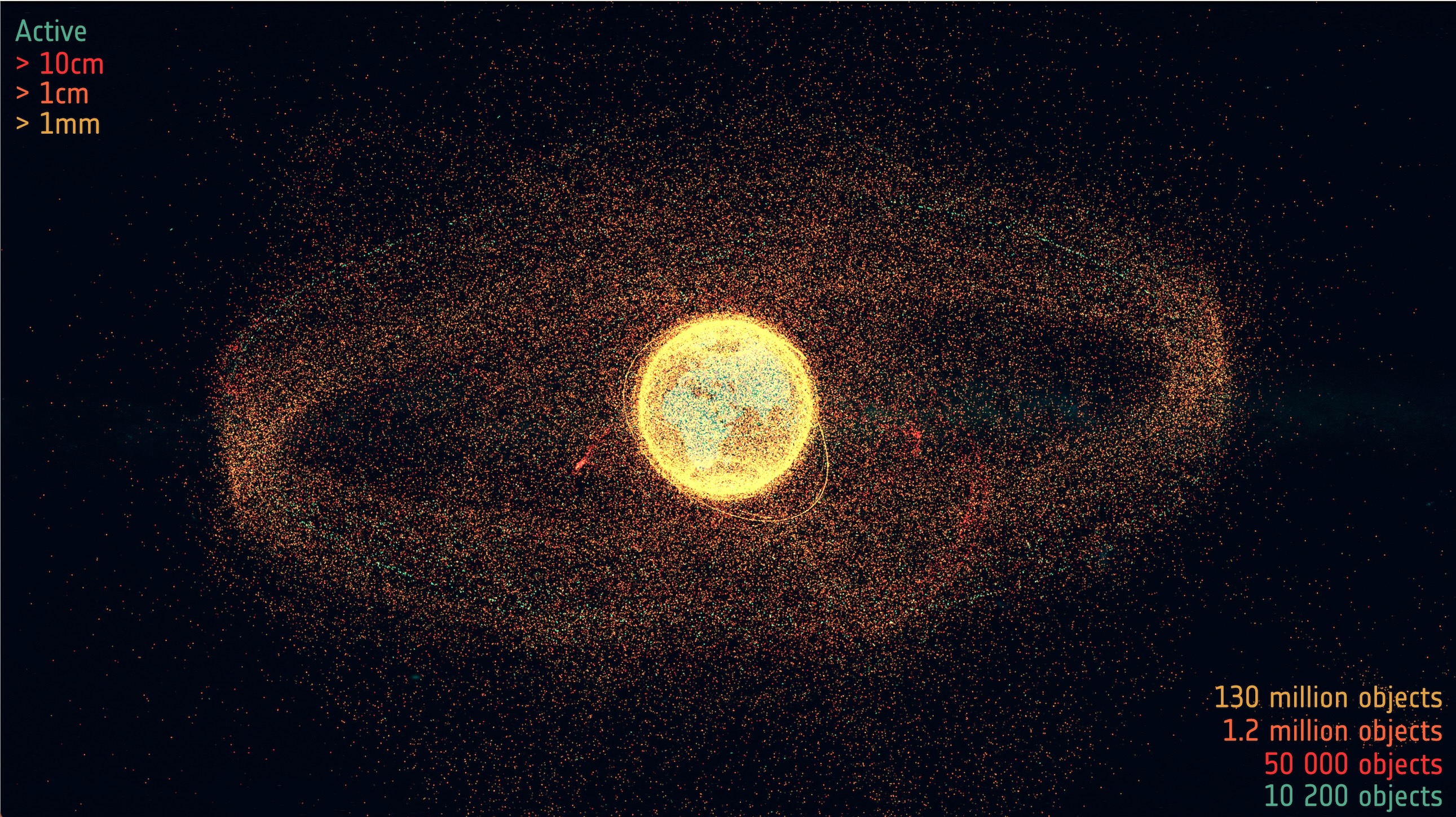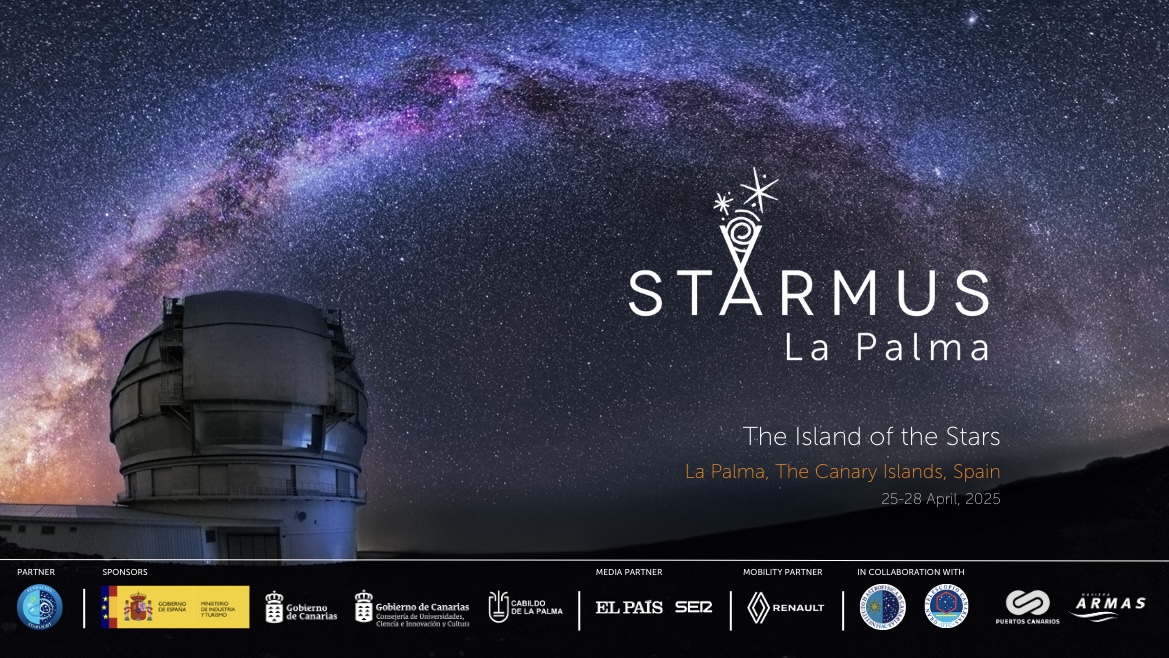Some dark matter haloes could roll through the universe like hollow cosmic Easter Eggs
"A starless or 'dark' dark matter halo would have no galaxy at its center."
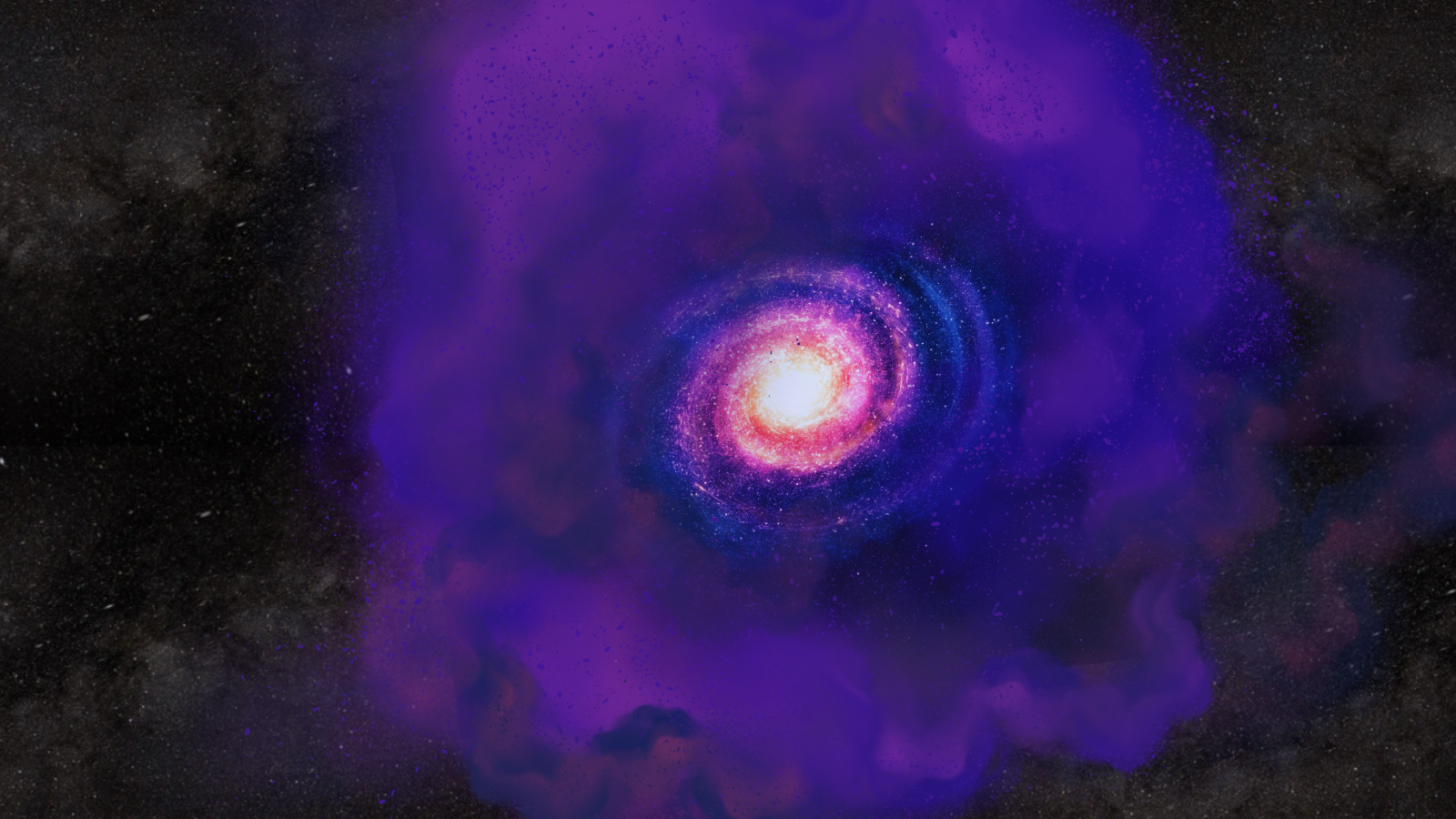
For some time, scientists have pondered a peculiar question: Can galaxies exist without an outer halo of dark matter? But new research flips this question around, investigating whether some dark matter haloes could exist without galaxies in their centers — like hollow Easter Eggs roaming the cosmos.
Galaxies and dark matter are so connected in theory because galaxies are thought to form as the result of gas and dust pouring into wells in space, and these wells are created by the gravitational influence of dark matter clumps. As mass gathers in those wells, stars are formed. This continuously "grows" a galaxy and, after millions of years, that galaxy ends up sitting in a dark matter bubble.
But Ethan Nadler, a computational astrophysicist at the University of California, San Diego, is probing the possible existence of galaxy-less "dark" dark matter haloes. It all began when he calculated the critical mass below which such a halo would fail to form stars.
"Every galaxy we've ever observed is consistent with residing in a dark matter halo. However, we don't know if dark matter halos exist that fail to form stars. In other words, we don't know if completely dark, star-free halos exist," Nadler told Space.com. "A starless or 'dark' dark matter halo would have no galaxy at its center."
Previously, Nadler explained, the star formation mass limit was thought to be between 100 million and 1 billion solar masses. That meant dark matter haloes only around that mass limit could indeed remain "dark" without forming stars, suggesting their existence is rather rare. Nadler, however, has now identified a new, lower star formation mass limit that suggests "dark" dark matter haloes could actually be more common than previously thought. In fact, he suggests less massive versions of these objects are actually favored by cosmological models.
One of the key components of star formation is hydrogen, the universe's lightest and most foundational element. Nadler explained that previous attempts to place a lower limit on star formation had only considered the cooling of the simplest form of hydrogen, consisting of one electron orbiting a nucleus of one proton. However, when considering the cooling of hydrogen molecules, consisting of two hydrogen atoms bonded together, he found stars could form in dark matter haloes that weighed just 1 million solar masses about a billion years after the Big Bang — way smaller than the previous calculations predicted.
These haloes would have continued to grow by accumulating more dark matter over time, eventually reaching masses equal to 10 million solar masses in the current universe. Even smaller dark matter haloes than that would also have grown by gathering mass — but their star formation would have been stymied due to radiation streaming into them from other (more successful) galaxies.
Get the Space.com Newsletter
Breaking space news, the latest updates on rocket launches, skywatching events and more!
"From a theoretical standpoint, most dark matter models predict that many more small halos exist than large halos, so in that sense, starless halos are likely to exist in great numbers," Nadler said.
Einstein sheds light on 'dark' dark matter haloes
Dark matter is hypothesized to outweigh "ordinary matter" in the universe by a factor of five. That means all the stuff we see around us on a cosmic level, like stars, planets, and moons, and on an everyday level, like trees, clouds, cars, our bodies and the cat next door, accounts for just 15% of the matter in the universe.
Despite its ubiquity, however, dark matter is effectively invisible because it doesn't interact with light (or it does so too weakly to be detected with our instruments). Likewise, dark matter doesn't interact with ordinary matter, and we've seen no strong evidence that it interacts with itself. That doesn't necessarily mean dark matter haloes sans galaxies can drift through the cosmos like gigantic ghosts, though.
Dark matter does have mass, and that means it does interact gravitationally. That's how we know it's there in the first place. This means "dark" dark matter haloes, if they are out there, could be having an influence today.
"Although starless halos (if they exist) don't host galaxies, they still have a gravitational influence on both dark matter and normal matter," Nadler said. "So, the number and mass spectrum of starless halos that do exist are important in determining the small-scale structure of our universe and its gravitational dynamics.
"Observationally, though, we don't yet have evidence for the existence of halos below the galaxy formation threshold. The next major goal is to detect these objects."
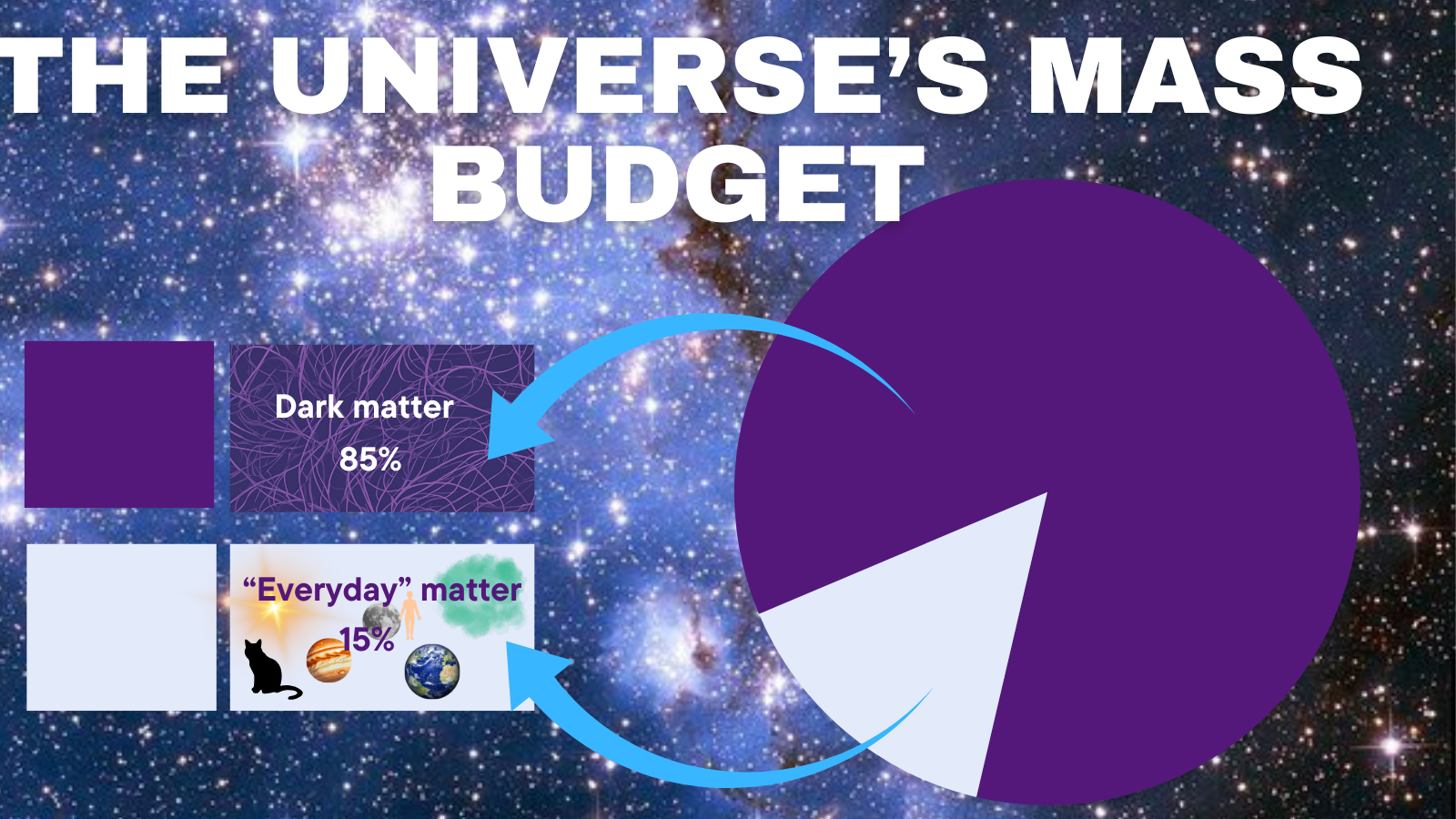
Hunting down these "dark" dark matter haloes is easier said than done, however, because of dark matter's "invisibility." Scientists infer the presence of dark matter by observing its gravitational effect on the visible, "everyday" matter component of galaxies, such as their stars, gas, and dust — but no galaxy within a dark matter halo means there's nothing visible for this gravitational influence to act on.
Other than the very fabric of space and time itself, that is.
"We can't look for 'dark' dark matter haloes directly; instead, we need to infer their presence based on their gravitational influence," Nadler explained. "One promising technique for doing this is strong gravitational lensing."
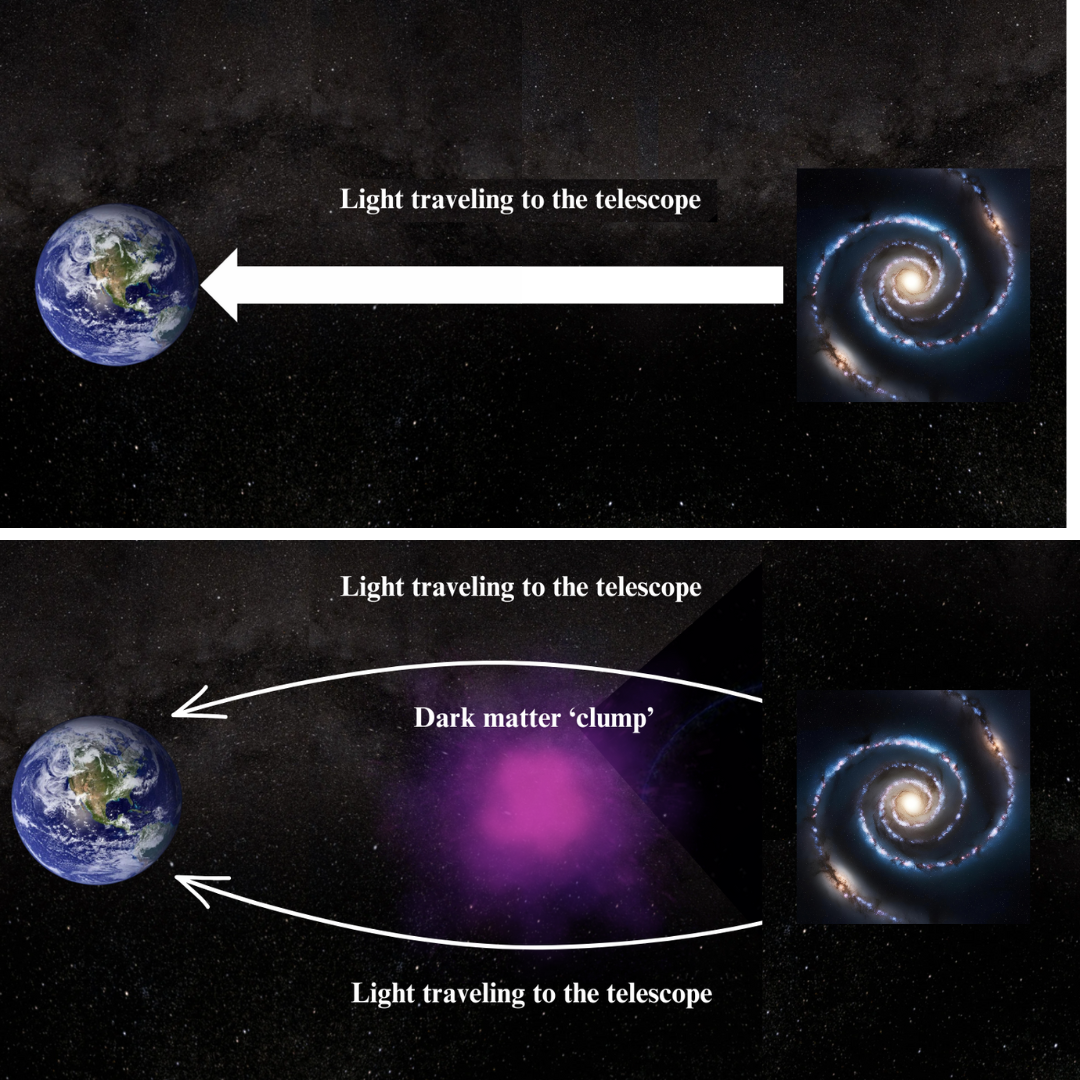
Gravitational lensing is a phenomenon first predicted by Albert Einstein in his 1915 theory of gravity, known as general relativity. This paradigm-shifting theory suggests objects with mass curve the fabric of spacetime (a four-dimensional unification of space and time).
When light from a background source passes this curvature and the object of mass, or the "gravitational lens," its path is curved, with the degree of curvature hinging on how closely to the mass the light passes. That means light from a single source can arrive to our instruments at different times, thus becoming magnified in its signal or even causing that background source to appear in multiple places in the same image.
"Dark" dark matter haloes may be invisible, but even without galaxies in their centers, they still have mass, which means they can still act as a gravitational lens. Unexplained lensing effects that can't be associated with visible matter could therefore tip astronomers off to the presence of a galaxy-less dark matter halo.
"Gravitational lensing data from the James Webb Space Telescope (JWST) is just becoming sensitive to around 10 million solar mass halos, and new facilities like the Rubin Observatory will discover thousands of new strong lenses," Nadler said. "I am hopeful that a firm detection of these objects is possible this decade."
These findings matter because the existence — or non-existence — of "dark" dark matter haloes below Nadler's star formation mass limit could help scientists discriminate between different dark matter models, including the standard model of cosmology or the "Lambda Cold Dark Matter" model, which is the current gold standard among cosmological models.
"If they don't exist that would also be extremely interesting, since it would mean that predictions of standard 'cold' dark matter models for the abundance of small halos are incorrect, and that dark matter may instead behave differently on sub-galactic scales, as in alternative models like warm, fuzzy, or self-interacting dark matter," Nadler concluded. "Mapping out which halos do host galaxies indicates how they formed stars, which is a fundamental question in galaxy formation theory."
Nadler's research was published on Tuesday (April 14) in The Astrophysical Journal Letters.
Join our Space Forums to keep talking space on the latest missions, night sky and more! And if you have a news tip, correction or comment, let us know at: community@space.com.

Robert Lea is a science journalist in the U.K. whose articles have been published in Physics World, New Scientist, Astronomy Magazine, All About Space, Newsweek and ZME Science. He also writes about science communication for Elsevier and the European Journal of Physics. Rob holds a bachelor of science degree in physics and astronomy from the U.K.’s Open University. Follow him on Twitter @sciencef1rst.
You must confirm your public display name before commenting
Please logout and then login again, you will then be prompted to enter your display name.


